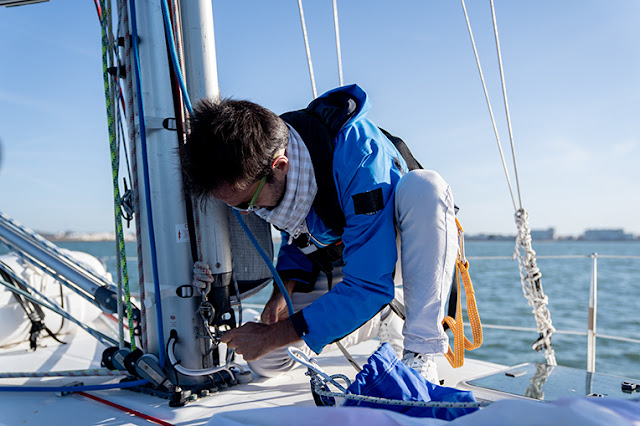How To Sail: Four Essential Skills Explained
Sailing can seem like a difficult, complex skill to people who have never learned to sail or been competent on the water. However, all that is really needed is a varied set of skills that can be learned, and if you can do this with the help of the Best Sailboat Club in San Diego, that's the best for you.
Here are four fundamental sailing abilities that we believe you should be well-versed in.
Hoisting The Main Sail
To catch the wind's thrust and move your boat forward, you'll need to learn how to quickly and safely raise the main sail.
First, you must fasten the main halyard to the main sail's head. The halyard, which attaches to the triangular mainsail head, is the line that extends from the boom to the top of the mast.
Untie the mainsheet and boom vang (located at the front of the boom) to relieve stress. Put the boat towards the wind now! Naturally, because the main sail is down, you'll have to do this using the jib or a motor, if you have one on board.
The sail can now be raised by locating the line that attaches to the halyard and pulling it up with one hand at a time. You're done when the main sail reaches the top of the mast; cleat the halyard off to keep it in place.
Gauging Wind Speed
Even with the development of electronic technology, it's still essential to have the specialized sailing talent of wind speed estimation in your back pocket.
Here, the Beaufort scale is your best friend. Essentially, it combines descriptions of the environment with a range of speeds expressed in miles per hour or knots. Feel free to bring a copy, but if you want to wow your guests, memorize the scale instead. The inland version can be utilized when traveling and at home.
It is wise to double-check wind speeds when sailing; you can do this by observing the sails of other ships to get a sense of how fast the winds are.
To get an agreement, talk about wind speed with other crew members on board as well.
Finally, keep in mind that the situations around you may vary based on which way you're facing when evaluating them.
Stiffening The Sails
To ensure the longevity of your sails, it is crucial to stiffen them. Rigid sails can withstand variations in wind speed and will flutter less under heavy winds, smoothing your journey.
It goes without saying that you should stiffen the sail well in advance of departure.
The sail should be laid flat on the ship's deck and positioned against the boom. Set it up to receive the sail battens by extending it from the boom and pulling it tight. These small lengths of plastic or wood give the sail the support it needs to stay rigid in windy circumstances.
Starting at the bottom of the sail, insert the battens into the batten pockets. Congratulations! Your sail has now been strengthened and is prepared to withstand a beating from the blustery coastal winds.
Avoiding the Boom When Sailing
In sailing sports, close calls with the boom are the leading cause of injury. It's not called the "boom" for nothing, though!
The more you can do to reduce the likelihood of being struck by the boom, the better, even if many sailors view being knocked by it as a rite of passage. Here's how to go about it.
Get a sense of the boom's range of motion first. If you want to have any hope of avoiding the boom, you must have a keen understanding of how far it can swing in each direction.
The next step is to identify the "safe zones," or the places on the boat where sitting or ducking makes it physically impossible for you to be hit by the boom. These will become your go-to locations when the boom swings around on the sea.
It's critical to maintain your composure while on board the boat, so keep an eye out for anything that can cause the boom to swing. For instance, if you're sailing slowly, the wake of a large motorized boat can tip sailboats and cause the boom to move.
Last but not least, keep in touch with your employees. Before coming around, the captain should cry, "Ready about!" and all sailors on board should take that as a cue to be alert for the swinging boom. Additionally, keep an eye out for your fellow sailors in general; a quick call could spare them from an unpleasant situation.



Comments
Post a Comment